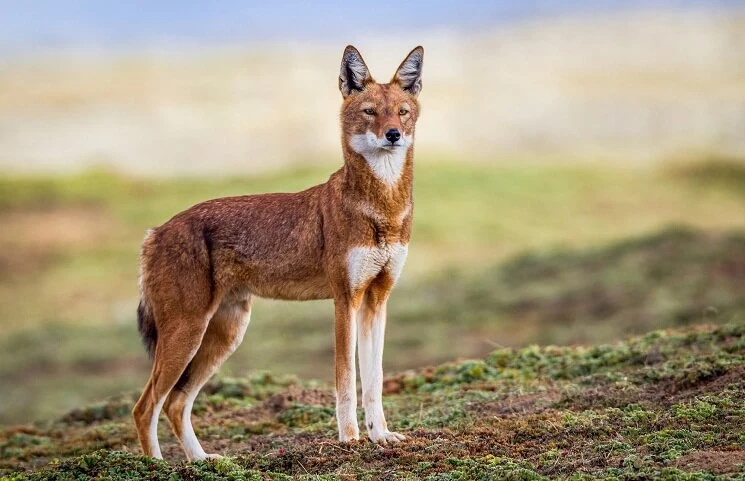The Ethiopian wolf, also known as the Simien fox or the red jackal, is a critically endangered species found only in Ethiopia. As a unique and important species in Ethiopia, the Ethiopian wolf has various local names that reflect the country’s rich cultural heritage.
In this article, we will explore the Ethiopian wolf’s history and characteristics, the importance of naming culture in Ethiopia, and the significance of Ethiopian wolf names in local culture and conservation efforts.
Here are a few examples of Ethiopian Wolf Names/Wolves Names:
- Simien
- Abyssinian
- Canis
- Rift
- Kudu
- Ras
- Aby
- Jinka
- Bale
- Taitu
- Selam
- Sheba
- Yirga
- Zara
- Yared
- Selamawit
- Tirunesh
- Fisseha
- Meles
- Addis
- Wolayta
Please note that these are not official names and you could always choose a name that you like.
Male Ethiopian Wolf Names
Here are a few examples of Male Ethiopian Wolf Names/Wolves Names:
- Canis
- Kudu
- Ras
- Jinka
- Bale
- Taitu
- Yirga
- Zara
- Yared
- Selamawit
- Tirunesh
- Fisseha
- Meles
- Addis
- Wolayta
- Abebe
- Bekele
- Girma
- Habtamu
- Tesfaye
- Mekonnen
- Solomon
- Tewodros
- Simien
Boy Ethiopian Wolf Names
Here are a few examples of unique Boy Ethiopian Wolf Names/Wolves Names:
- Teferi
- Tesfaye
- Biruk
- Habte
- Mekonnen
- Nigussu
- Selome
- Tadesse
- Tamirat
- Zerihun
Related: Native Wolf Names
Related: 500+ Wolf Names And Their Meanings (Both Male Wolf Names and Female Wolf Names)
Female Ethiopian Wolf Names
Here are a few examples of Female Ethiopian Wolf Names/Wolves Names:
- Abyssinian
- Rift
- Aby
- Selam
- Sheba
- Selamawit
- Tirunesh
- Fisseha
- Meles
- Addis
- Wolayta
- Amsale
- Birtukan
- Emebet
- Frehiwot
- Genet
- Hirut
- Kalkidan
- Makeda
- Netsanet
- Senait
- Tadelech
- Zewditu
Girl Ethiopian Wolf Names
Here are a few examples of Girl Ethiopian Wolf Names/Wolves Names:
- Selam
- Sheba
- Selamawit
- Tirunesh
- Fisseha
- Abyssinian
- Aby
- Meles
- Addis
- Wolayta
- Amsale
- Birtukan
- Emebet
- Frehiwot
- Genet
- Hirut
- Kalkidan
- Makeda
- Netsanet
- Senait
- Tadelech
- Zewditu
History and Characteristics of the Ethiopian Wolf
The Ethiopian wolf is the only wolf species found in Africa and is considered a living fossil. The species is believed to have diverged from the common ancestor of all wolves over 3 million years ago.
The Ethiopian wolf is a small carnivorous mammal with a reddish-orange coat, black ears and tail, and long legs. They live in the Ethiopian highlands and prefer to hunt rodents and small mammals.
Unfortunately, their habitat is being destroyed by human activities such as agriculture, and their population is dwindling.
Naming Culture in Ethiopia
Naming culture is essential in Ethiopia, where names are significant and reflect local cultures and traditions. Names are also essential in Ethiopia’s conservation efforts as they represent a connection between people and animals.
Animals are often named based on their physical characteristics, behavior, or the environment they inhabit. Ethiopian wolf names have significant cultural and ecological importance.
Ethiopian Wolf Names
Ethiopian wolves have different names in various local languages. The Amharic name for the Ethiopian wolf is “Key kebero,” meaning red jackal. The Tigrigna name is “Simien fox,” referring to the species’ location in the Simien Mountains.
The Oromo name for the Ethiopian wolf is “Gaba,” meaning the brave one. These names reflect the significance of the Ethiopian wolf in local cultures and their connection with the natural environment.
Conservation Efforts for the Ethiopian Wolf
The Ethiopian wolf is one of the world’s rarest canids, with only about 500 individuals left in the wild. They face numerous threats, including habitat loss, disease, and hunting. To protect the Ethiopian wolf, various conservation efforts have been established, such as the Ethiopian Wolf Conservation Programme.
This program works with local communities to increase awareness and reduce the human impact on the species’ habitat.
Preserving Local Culture in Conservation Efforts
Preserving the Ethiopian wolf’s naming culture is critical in conservation efforts. By preserving these names and their meanings, we can better understand the importance of the species in local cultures and ensure that conservation efforts are culturally appropriate.
The loss of cultural heritage and biodiversity is interconnected, and the preservation of naming culture can contribute to the conservation of the Ethiopian wolf.
Conclusion
The Ethiopian wolf is a significant species in Ethiopia, and its names reflect the country’s rich cultural heritage. Preserving these names and their meanings can contribute to the conservation of the Ethiopian wolf and its natural habitat.
By understanding the significance of naming culture, we can better appreciate the cultural and ecological value of the Ethiopian wolf and work towards its conservation.
